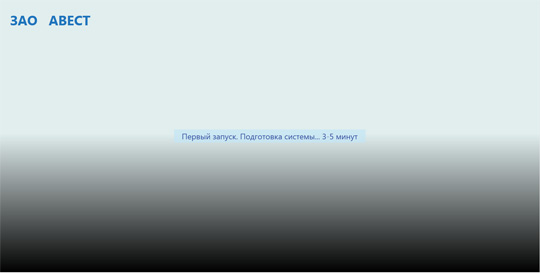Ransom.MSIL.AVEST.A
Ransom-Avest!54465F04A607 (NAI); W32/Ransom.A (exact) (FPROT)
Windows


Threat Type: Ransomware
Destructiveness: No
Encrypted: No
In the wild: Yes
OVERVIEW
This Ransomware arrives on a system as a file dropped by other malware or as a file downloaded unknowingly by users when visiting malicious sites.
It drops files as ransom note.
TECHNICAL DETAILS
Arrival Details
This Ransomware arrives on a system as a file dropped by other malware or as a file downloaded unknowingly by users when visiting malicious sites.
Installation
This Ransomware drops the following copies of itself into the affected system:
- {My Documents folder}\MyPictures\officeUpdate.exe
- {First writable directory per drive}\googleupdate.exe (if file name contains DJVU, INSTALLER, AVEST, OFFICEUPDATE.EXE)
- {Files targeted by %Desktop% shortcuts}
(Note: %Desktop% is the current user's desktop, which is usually C:\Documents and Settings\{User Name}\Desktop on Windows 2000(32-bit), XP, and Server 2003(32-bit), or C:\Users\{user name}\Desktop on Windows Vista, 7, 8, 8.1, 2008(64-bit), 2012(64-bit) and 10(64-bit).)
It drops the following files:
- {My Documents folder}\MyPictures\details.txt ⟵ contains random 8-character key
It adds the following processes:
- "%System%\taskkill.exe" /F /IM WINWORD*
- "%System%\taskkill.exe" /F /IM EXCEL*
- "%System%\taskkill.exe" /F /IM 1c*
- "%System%\taskkill.exe" /F /IM notepad*
(Note: %System% is the Windows system folder, where it usually is C:\Windows\System32 on all Windows operating system versions.)
Autostart Technique
This Ransomware drops the following file(s) in the Windows Common Startup folder to enable its automatic execution at every system startup:
- %Common Startup%\officeupdate.lnk ⟵ points to {My Documents folder}\MyPictures\officeUpdate.exe (if file name contains DJVU, INSTALLER, AVEST, OFFICEUPDATE.EXE)
(Note: %Common Startup% is the startup folder for all users, which is usually C:\Documents and Settings\All Users\Start Menu\Programs\Startup on Windows 2000, XP, and Server 2003, or C:\ProgramData\Microsoft\Windows\Start Menu\Programs\Startup on Windows Vista, 7, and 8.)
Other System Modifications
This Ransomware deletes the following files:
- Shortcut files in %Desktop%
(Note: %Desktop% is the current user's desktop, which is usually C:\Documents and Settings\{User Name}\Desktop on Windows 2000(32-bit), XP, and Server 2003(32-bit), or C:\Users\{user name}\Desktop on Windows Vista, 7, 8, 8.1, 2008(64-bit), 2012(64-bit) and 10(64-bit).)
Other Details
This Ransomware does the following:
- Log off all Remote Desktop Services (RDS) sessions.
- Rename all files targeted by %Desktop% shortcuts as {Original filename}64.{Original file extension}.
- Propagate using Remote Desktop Protocol (RDP).
(Note: %Desktop% is the current user's desktop, which is usually C:\Documents and Settings\{User Name}\Desktop on Windows 2000(32-bit), XP, and Server 2003(32-bit), or C:\Users\{user name}\Desktop on Windows Vista, 7, 8, 8.1, 2008(64-bit), 2012(64-bit) and 10(64-bit).)
It locks the screen and displays the following image:
Ransomware Routine
This Ransomware appends the following extension to the file name of the encrypted files:
- .ckey({Random 8-character key}).email data1992@{BLOCKED}mail.com).pack14
It drops the following file(s) as ransom note:
- !!!Readme!!!Help!!!.txt
It leaves text files that serve as ransom notes containing the following text:
- Problems with your data? Contact us: data1992@{BLOCKED}mail.com
key: {Random 8-character key}
SOLUTION
Step 1
Trend Micro Predictive Machine Learning detects and blocks malware at the first sign of its existence, before it executes on your system. When enabled, your Trend Micro product detects this malware under the following machine learning name:
- Troj.Win32.TRX.XXPE50FFF033
Step 2
Before doing any scans, Windows 7, Windows 8, Windows 8.1, and Windows 10 users must disable System Restore to allow full scanning of their computers.
Step 3
Note that not all files, folders, and registry keys and entries are installed on your computer during this malware's/spyware's/grayware's execution. This may be due to incomplete installation or other operating system conditions. If you do not find the same files/folders/registry information, please proceed to the next step.
Step 4
Restart in Safe Mode
Step 5
Search and delete these files
- {My Documents folder}\MyPictures\officeUpdate.exe
- {First writable directory per drive}\googleupdate.exe
- {Files targeted by %Desktop% shortcuts}
- %Common Startup%\officeupdate.lnk
Step 6
Restart in normal mode and scan your computer with your Trend Micro product for files detected as Ransom.MSIL.AVEST.A. If the detected files have already been cleaned, deleted, or quarantined by your Trend Micro product, no further step is required. You may opt to simply delete the quarantined files. Please check this Knowledge Base page for more information.
Step 7
Restore encrypted files from backup.
Did this description help? Tell us how we did.



